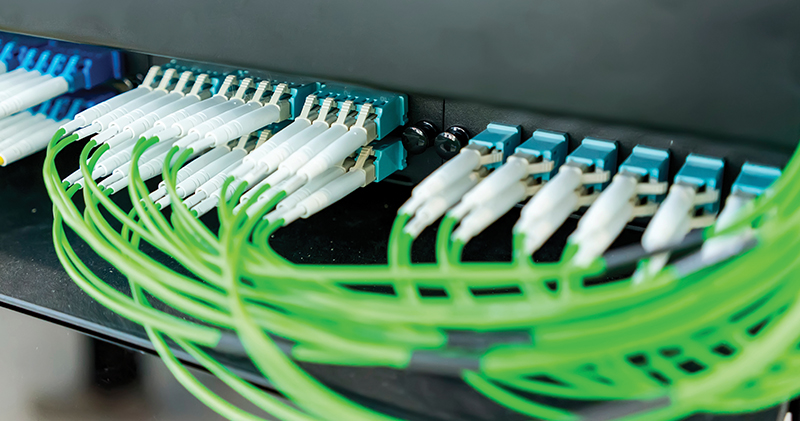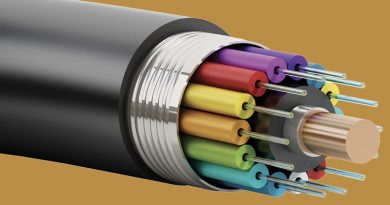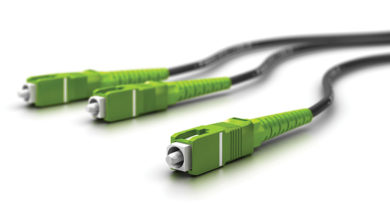Deciphering the OM Fiber Designation
By Steven Harris
Many operators are in full swing deploying an increased amount of fiber in their networks. When we consider the 10 Gbps next generation optical network, we often think about single-mode fiber (SMF) optics. Digital SMF optics are a large part of our deployments. However, there are numerous instances within the telecommunication network that leverage multi-mode fiber (MMF). MMF uses a larger core than SMF and is well suited for communications over short distances inside buildings like a headend, hub site, optical transport node (OTN) or datacenter. As for data rates, MMF supports up to 400 Gbps.
For telecommunication operators, MMF is more cost effective than SMF when it comes to fiber deployments inside of buildings or within business campuses. Today’s MMF is ideal for deployments up to a few hundred meters (m). There are a variety of MMF options, which may make it difficult for our technicians to select the appropriate MMF cabling. Demystifying the types of MMF will reduce the human error factor (HEF) in our networks, as well as assist with future proofing these optical connections. Distinguishing the various differences is helpful to understanding the bandwidth, long reach limits and a variety of other capabilities.
There are five types of MMF structured wiring options available in the industry. These choices are standardized under the International Organization for Standardization (ISO) and International Electrotechnical Commission (IEC) as ISO 11801 / IEC 60792-2-10. For the record, there are similar TIA/EIA structured standards for MMF. An important tip is that structured wiring standards offer a certain performance assurance and superiority beyond conventional vendor guarantees (e.g., OM4+). ISO/IEC provides OS designations for SMF and OM designations for MMF structured wiring. The focus of this article is on the OM designations.
The OM designations for OM1 and OM2 (OM1/2) were deployed in earlier optical communications, where light emitting diode (LED) transmitters (Tx) were used in communications from 100 Mbps to 622 Mbps. LED Tx creates more modes of light than laser generated. In later OM1/2 deployments 10G options were added with shorter reaches. However, OM1/2 are not recommended for new greenfield installations and are considered obsolete by many industry experts. In addition, OM1/2 have a higher attenuation rate than newer OMx MMF, about .5 dB greater @ 850 nm.
Today, 10 Gbps modulated networks ideally require laser-optimized MMF (LOMMF) cables, delivering fewer modes of light. Vertical cavity surface emitting lasers (VCSELs) emerged in the 1980s and are used in short-reach MMF networks. OM3 and OM4 (OM3/4) are designed for these laser-optimized networks. OM3 production techniques advanced over time, improving the ability to support 40 Gbps and 100 Gbps with a reach of 100 m. OM4 capabilities build on the successes of OM3, offering greater reach for 10 Gbps and 100 Gbps optical transmissions. There are proprietary versions of OM4, referred to as OM4+, to further extend reach. Keep in mind these references are not recognized by standards bodies like ISO/IEC and may limit vendor acceptance in field applications.
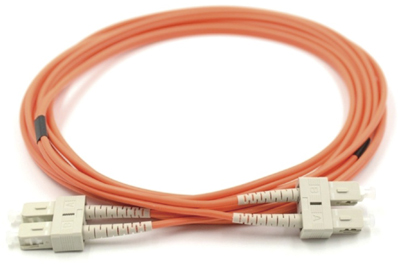
Figure 1. OM2 MMF jumper
OM5 was designed to be used with wavelengths beyond 850 nm, often referred to as wideband (WB) MMF. OM5 also endorses the transmission of multiple wavelengths over a single MMF. OM5 leverages four short wavelength division multiplexing (SWDM) channels of 25 Gbps each to achieve higher 100 Gbps, 200 Gbps and 400 Gbps transmissions over MMF. OM5 is also a great choice for reducing parallel fiber counts for higher transmission networks by a factor of four. OM5 is backward compatible to OM3/4 solutions.
Each of the OM MMF cables have suggested jacket colors. The colors make it helpful to visually validate proper cabling is being used in various applications. Please refer to Table 1 for suggested jacket colors.
In conclusion, be sure to properly identify the type of MMF cables used in different telecommunication applications, along with their capabilities and benefits. Where required, use newer OM type solutions like OM4/5 for longer 10 Gbps reach options or newer bandwidth opportunities such as 25+ Gbps. For folks working in communication facilities, OM5 will be MMF cable of choice. To learn more or to become a subject matter expert in fiber optics be sure to visit SCTE.org/BFI and SCTE.org/BTS.
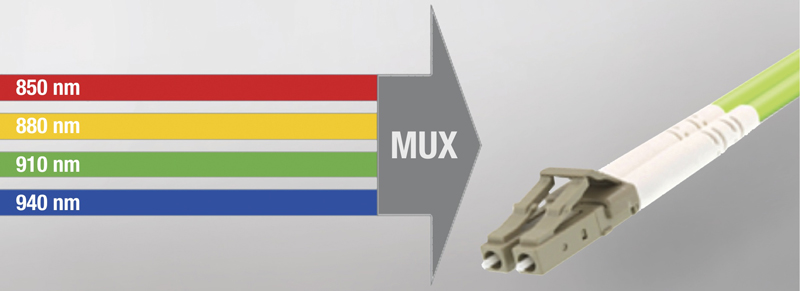
Figure 2. VCSEL Tx over an OM5 MMF jumper
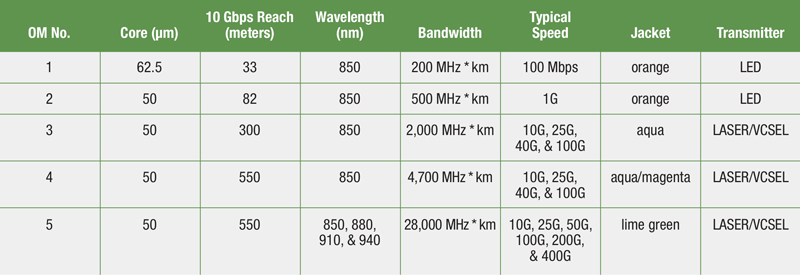
Table 1. OM designed MMF jumpers
 Steven Harris
Steven Harris
Executive Director, Technical Sales, Learning & Development
SCTE•ISBE
sharris@scte.org
Steve is an international SME and thought leader, and the executive director of education and business development for SCTE·ISBE. He is responsible for overseeing the architecture and evolution of educational programs, credentialing, and customized career progressions, as well as business development and partnerships. His team is responsible for an education library that is now 900+ modules, designed to drive business results. With more than 30 years in education, he has taught much of the content of the library, with a dynamic approach to the delivery of highly complex topics.
Shutterstock

